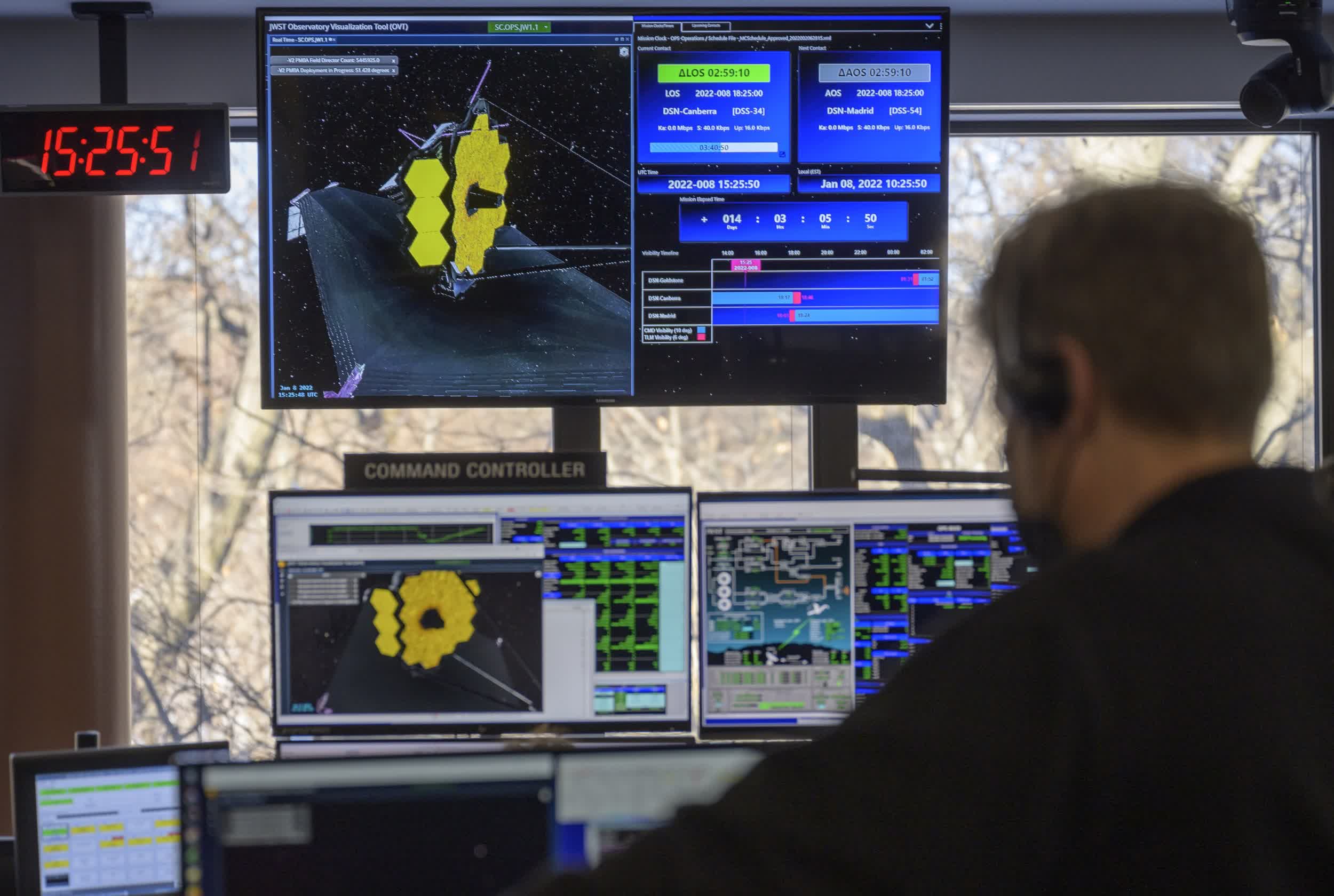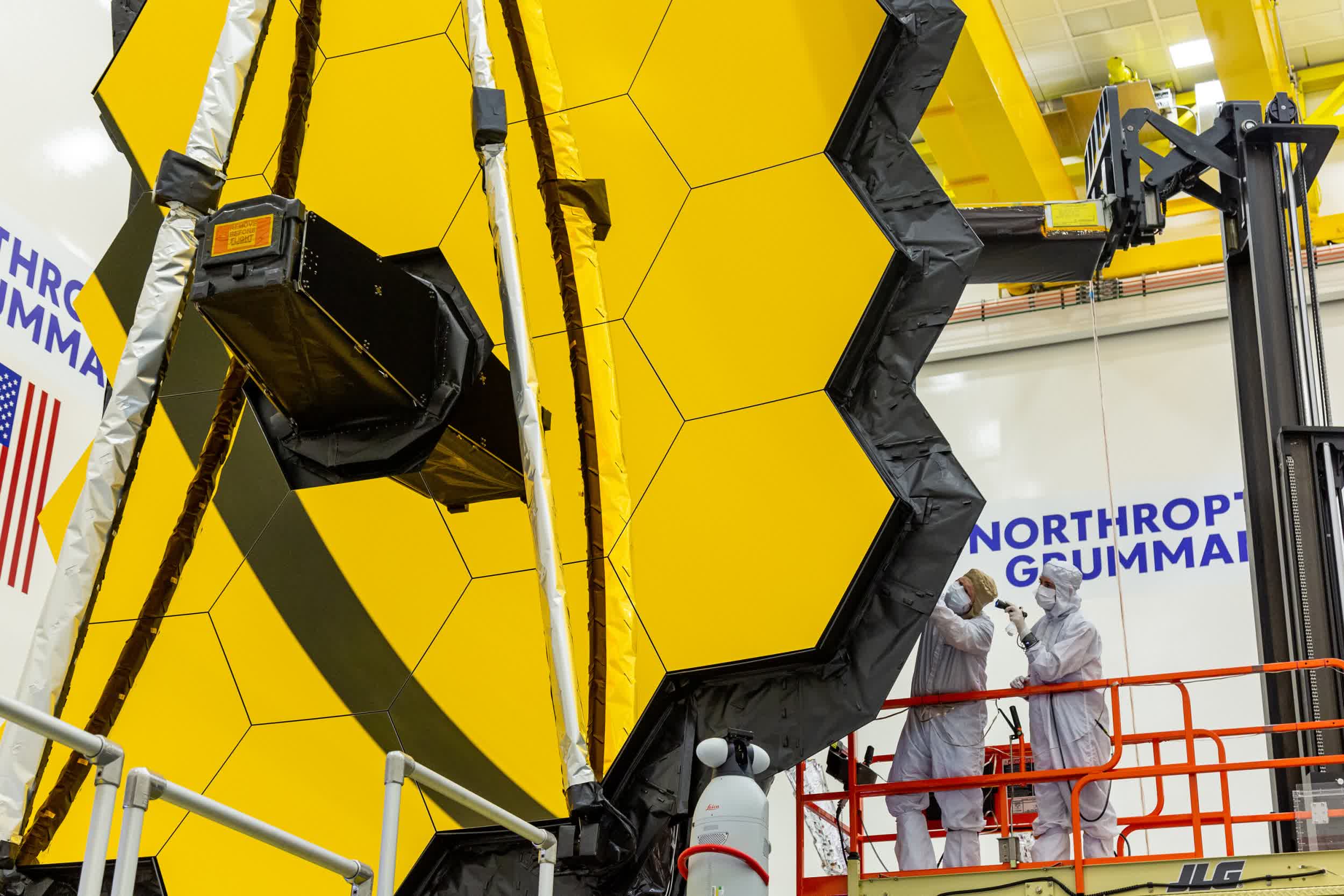In brief: NASA's James Webb Space Telescope mission on Saturday checked off another pivotal milestone as the observatory's primary mirror was successfully deployed and latched into place over a two-day period. So far, so good.
The 21-foot, gold-coated primary mirror had to be folded to fit inside the nose cone of the rocket that carried it to space. The maneuver came after several other critical spacecraft deployments including the unfurling of the five-layer sunshield, and completes the final stage of all major deployments.
Webb will spend the next couple of weeks continuing its journey to the L2 insertion point. Along the way, the launch team will begin calibrating its 18 primary mirror segments using 126 actuators on the backside of the mirror segments to properly align the telescope optics.
#NASAWebb is fully deployed! 🎉
--- NASA Webb Telescope (@NASAWebb) January 8, 2022
With the successful deployment & latching of our last mirror wing, that's:
50 major deployments, complete.
178 pins, released.
20+ years of work, realized.
Next to #UnfoldTheUniverse: traveling out to our orbital destination of Lagrange point 2! pic.twitter.com/mDfmlaszzV
Before the first images from Webb can be delivered this summer, NASA must calibrate the observatory's onboard science instruments.
There's also a third mid-course correction burn on the docket that'll help position the craft into orbit around the second Lagrange point nearly a million miles away from Earth. The observatory has to be positioned so far away in order to protect it from the light and heat of the Sun, Earth and Moon.
Webb is the largest, most complex telescope ever launched into space. It blasted off from Kourou, French Guiana, on Christmas Day courtesy of an Ariane 5 rocket following years of cost overruns and delays.

NASA said late last month that due to its precision launch and smooth initial course correction maneuver, Webb should have enough fuel to significantly extend its planned 10-year mission duration.
